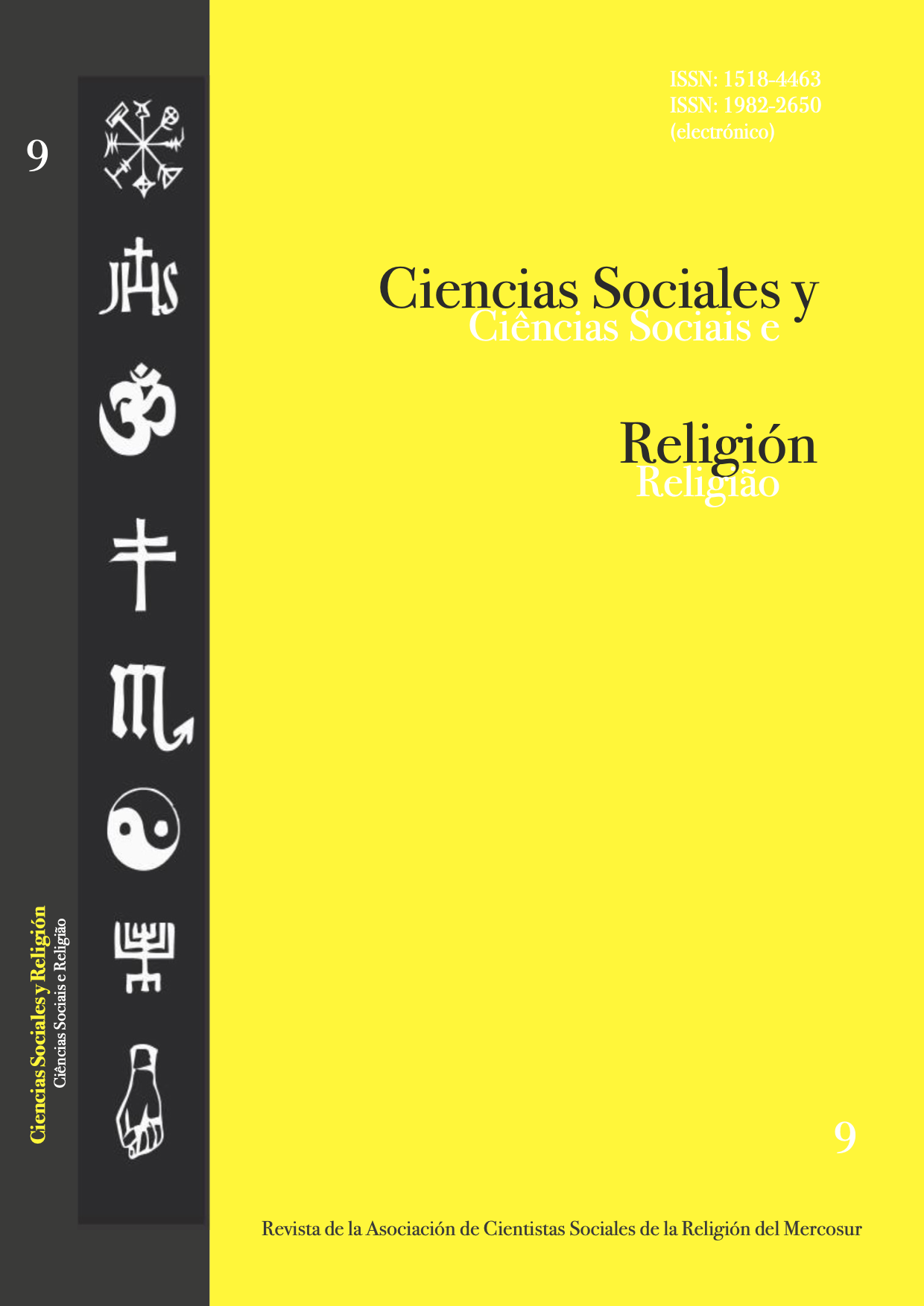Abstract
In this article, we stress the importance of a set of what we call the “identitfication referents” present in the Candomblé idiom and present a discussion of the manner people use these elements to build their identities in a progressive and flexible way. With this objective in mind, we decided to reconsider some issues related to how the construction of the person is analyzed in Candomblé, starting with what classical authors had to say on the subject and emphasizing what ethnographic data produced in the city of Cachoeira, Bahia. indicates as innovations in relation to them. First, we present the controversy between unicity and multiplicity of the self in Candomblé, inserting it in the broader philosophical debate about how cultures produce different metaphors to cover a probably universal “illusion of totality”. Then, we point out to the existence of individuality mechanisms within a society we could otherwise consider as being mainly social-centric. Finally, we present new religious referents that are not generally explored in analysis regarding identity games in Candomblé, as we emphasize the importance of the adepts’ subjectivity in the construction of these games.
References
AUGRAS, Monique. Le double et la métamorphose. L’identification mythique dans le Candomblé brésilien. Paris: Meridiens Klincksieck, 1992.
BASTIDE, Roger. Le candomblé de Bahia. Rite Nagô. Paris: Mouton, 1958.
BASTIDE, Roger. Le principe d’individuation. In : La notion de personne en Afrique Noire, Colloques Internationaux du Centre National de la Recherche. Paris: Éditions du C.N.R.S, 1973.
BATTAGLIA, Debbora. Problematizing the Self: A Thematic Introduction. In:
BATTAGLIA, D. Rethorics of Self Making (Ed.) Berkeley: University of California Press, 1995, p.1-15.
BODDY, Janice. Wombs and Alien Spirits. Women, Men, and the Zar Cult in Northern Sudan. Madison: The University of Wisconsin Press, 1989.
BRAGA, Júlio. Ancestralidade Afro-Brasileira. O culto de babá egum. Salvador : Ianamá, 1992.
CALLIGARIS, Contardo. La structure psychotique hors crise. Question préliminaire. In: Actes de la Fondation Européenne pour la Psychanalyse. 1958-1993. L’abord des psychoses après Lacan. Bourdeaux: Point Hors Ligne, 1993.
CORIN, Ellen. Vers une réapropriation de la dimension individuelle en psychologie africaine. Revue Canadienne des Etudes Africaines, v.14, n.1, p. 135-156, 1980.
CSORDAS, Thomas. Embodiment and Experience. The Existential Ground of Culture and Self. Cambridge: Cambridge University Press, 1994.
DUARTE, Luis Fernando Dias. Da vida nervosa nas classes trabalhadoras urbanas. Rio de Janeiro: Jorge Zahar Editor,1986.
DUARTE, Luis Fernando Dias. A outra saúde: mental, psicossocial, físico-moral? In: ALVES P. C. e MINAYO, M. C. (Eds.). Saúde e Doença: Um Olhar Antropológico. Rio de Janeiro: Ed. Fiocruz, 1994.
ELBEIN dos SANTOS, Juana; Santos, Descoredes. Esu Bara, Principle of Individual Life in the Nago System in C.N.R.S., La notion de personne en Afrique Noire. Paris: Éditions du C.N.R.S,1973.
EWING, Katherine P. The Illusion of Wholeness: Culture, Self, and the Experience of Inconsistency. Ethos, v.18, p. 251-278, 1990.
GEERTZ, Clifford. The Interpretation of cultures. New York: Basic Books, 1973.
GOLDMAN, M. A construção ritual da pessoa: a possessão no Candomblé. Religião e Sociedade, agosto, Rio de Janeiro, 1985.
IRIART, Jorge. Les femmes dans le candomblé. Expérience religieuse et idiome de la possession dans la vie des femmes de Cachoeira, Brésil. Tese (Doutorado em Antropologia Social) – Universidade de Montreal, Montreal,1998.
KUNDERA, Milan. L’art du roman. Paris: Gallimard (folio), 1986.
LAMBECK, Michael. Human Spirits. A Cultural Account of Trance in Mayotte. Cambridge: Cambridge University Press, 1981.
LÉPINE, Claude. Os estereótipos da personalidade no candomblé Nagô. In: MOURA, Carlos E. M. de (Org.) Olóòrixà. Escritos sobre a religião dos orixás. São Paulo: Ágora, 1981, p. 11-32.
LÉVI-STRAUSS, Claude. Tristes Tropiques. Paris: Plon, 1955.
LIENHARDT, Godfrey. Divinity and Experience. The religion of the Dinka. Oxford: Oxford University Press, 1970[1961].
LIENHARDT, Godfrey. Self: public and private. Some African representations. In: CARRITHERS, M.; COLLINS, S.; LUKES, S. (Eds.). Category of the Person. 1995, p.141-155.
LOW, Setha. Embodied metaphors: nerves as lived experience. In: CSORDAS, Thomas (Ed.) Embodiment and Experience. The Existential Ground of Culture and Self. Cambridge: Cambridge University Press, 1994, p.139-162.
NUNES, Mônica de Oliveira. À temps et à contre-temps: les voix des tambours dans l’expérience des psychotiques. Tese (Doutorado em Antropologia Social). Université de Montréal, Montreal, 1999.
OBEYESEKERE, Gananath. Medusa’s Hair: An Essay on Personal Symbols and Religious Experience. Chicago: University of Chicago Press,1981.
PRANDI, Reginaldo. Os Candomblés de São Paulo: a velha magia na metrópole nova. São Paulo: Hucitec/Edusp,1991.
TAYLOR, Charles. Grandeur et misère de la modernité. Québec: Bellarmin,1992.
ZEMPLÉNI, Andras. From Symptom to sacrifice: The Story of Khadi Fall. In: CRAPANZANO, V. and GARRISON (Eds.) Case Studies in Spirit Possession. New York: John Wiley & Sons, 1977, p. 87-139.

This work is licensed under a Creative Commons Attribution-NonCommercial-ShareAlike 4.0 International License.
Copyright (c) 2020 Mônica de Oliveira Nunes
